Why do we have emotions?
The short answer
Emotions are evolutionary tools designed to help us survive as social creatures. They prompt us to take actions vital for safety and belonging, facilitate non-verbal communication, and help us understand our own needs.
The long answer
I've had some ups and downs with my emotions lately. Nothing serious, just life. But it got me wondering: what's the point of emotions anyway?
Emotions can certainly bring richness and color to our lives, but sometimes they seem to "get in the way" or become something we'd rather not experience at all.
It’s helpful to re-frame emotions as tools. In a recent interview, psychotherapist Dr. Annie Zimmerman describes this point beautifully:
“Really, our feelings and behaviours are our teachers; they are communicating something to us that we need to listen to in order to understand the deeper problem at play.”
Approaching emotions, especially negative ones, with curiosity is powerful. So in the spirit of curiosity (what this newsletter is all about), I thought it might be interesting to cover some of the evolutionary reasons why we have emotions.
Reason #1: Emotions spur actions to help us survive.
Emotions serve a vital function for us as humans. As social animals, we are hardwired to seek safety and belonging. Emotions are your body's way of prompting you to take action to retain these key needs.
This explains why emotions have such a physiological response. For example, when you feel fear, your heart typically starts racing. Your body is allocating more blood, oxygen, and energy to help you get ready to run away from danger or fight off the threat.
Each emotion we experience nudges us toward actions to help us remain safe or part of the group. Here are some examples of how emotions spur actions:
| Emotion | Action |
|---|---|
| 😁 Joy | Keep doing this |
| 😢 Sadness | Slow down/withdraw |
| 😨 Fear | Protect yourself |
| 🤢 Disgust | Spit it out |
| 😡 Anger | Attack |
| 🫢 Surprise | Adapt to new information quickly |
| 😏 Pride | Show off your increased social status to others |
| 😔 Shame | Hide/cover up |
| 😳 Embarrassment | Align with social norms |
| 🤩 Excitement | Seek out the new opportunity |
Reason #2: Emotions help us communicate non-verbally with others.
Before we had verbal language, our ancestors relied on emotions and associated non-verbal cues for communication, a practice that remains valuable today. Facial expressions and body language speak volumes. What better way to let your friend know you've found a promising shelter than a look of pure excitement!
Here are some examples of what emotions help us non-verbally communicate to others:
| Emotion | External communication |
|---|---|
| 😁 Joy | "This is good/safe." |
| 😢 Sadness | "There has been a loss." |
| 😨 Fear | "There is danger." |
| 🤢 Disgust | "There is something gross/unsafe." |
| 😡 Anger | "Someone is taking advantage of me/us." |
| 🫢 Surprise | "There is a new situation." |
| 😏 Pride | "I have achieved higher status." |
| 😔 Shame | "I feel unworthy because of my actions or flaws." |
| 😳 Embarrassment | "I've momentarily made a social mistake in front of others." |
| 🤩 Excitement | "There is something positive about to happen." |
Reason #3: Emotions help us recognize what we need.
Emotions also communicate needs to ourselves. They are there to help us make sense of what's happening, guide our lives, and alter our choices. At the end of the day, emotions are data about what we need.
Here are some examples of what emotions help us reveal our needs to ourselves:
| Emotion | Internal communication |
|---|---|
| 😁 Joy | "I need to keep this good thing." |
| 😢 Sadness | "I need to heal and process my loss." |
| 😨 Fear | "I need safety and protection now." |
| 🤢 Disgust | "I need to avoid this to protect myself." |
| 😡 Anger | "I need to address this injustice." |
| 🫢 Surprise | "I need to adapt to a new situation quickly." |
| 😏 Pride | "I need to acknowledge my self-worth and share my accomplishments." |
| 😔 Shame | "I need to reassess my actions and possibly make amends." |
| 😳 Embarrassment | "I need to realign with social norms." |
| 🤩 Excitement | "I need to explore this positive opportunity." |
Curious about how the world works?
Today You Should Know is a free, weekly email newsletter designed to help you learn something new every Friday.
Subscribe today 👇
Check out some other curious questions:
Sources
Cherry, K. (2022, December 1). The 6 Types of Basic Emotions and Their Effect on Human Behavior . Verywell Mind. https://www.verywellmind.com/an-overview-of-the-types-of-emotions-4163976
Guy-Evans, O. (2023, November 9). Fight, Flight, Freeze, or Fawn: How We Respond to Threats. Simply Psychology. https://www.simplypsychology.org/fight-flight-freeze-fawn.html
Rogers, H. (n.d.). Why Do I Need to Have Emotions?. Moving Mindsets. https://www.movingmindsets.com.au/why-do-i-need-to-have-emotions/
Scott, E., & Zimmerman, A. (2023, July). One Good Thing: why getting curious about your emotions could help your mental health. Stylist. https://www.stylist.co.uk/health/mental-health/one-good-thing-get-curious/808280




It’s like an American accent but with calendars.